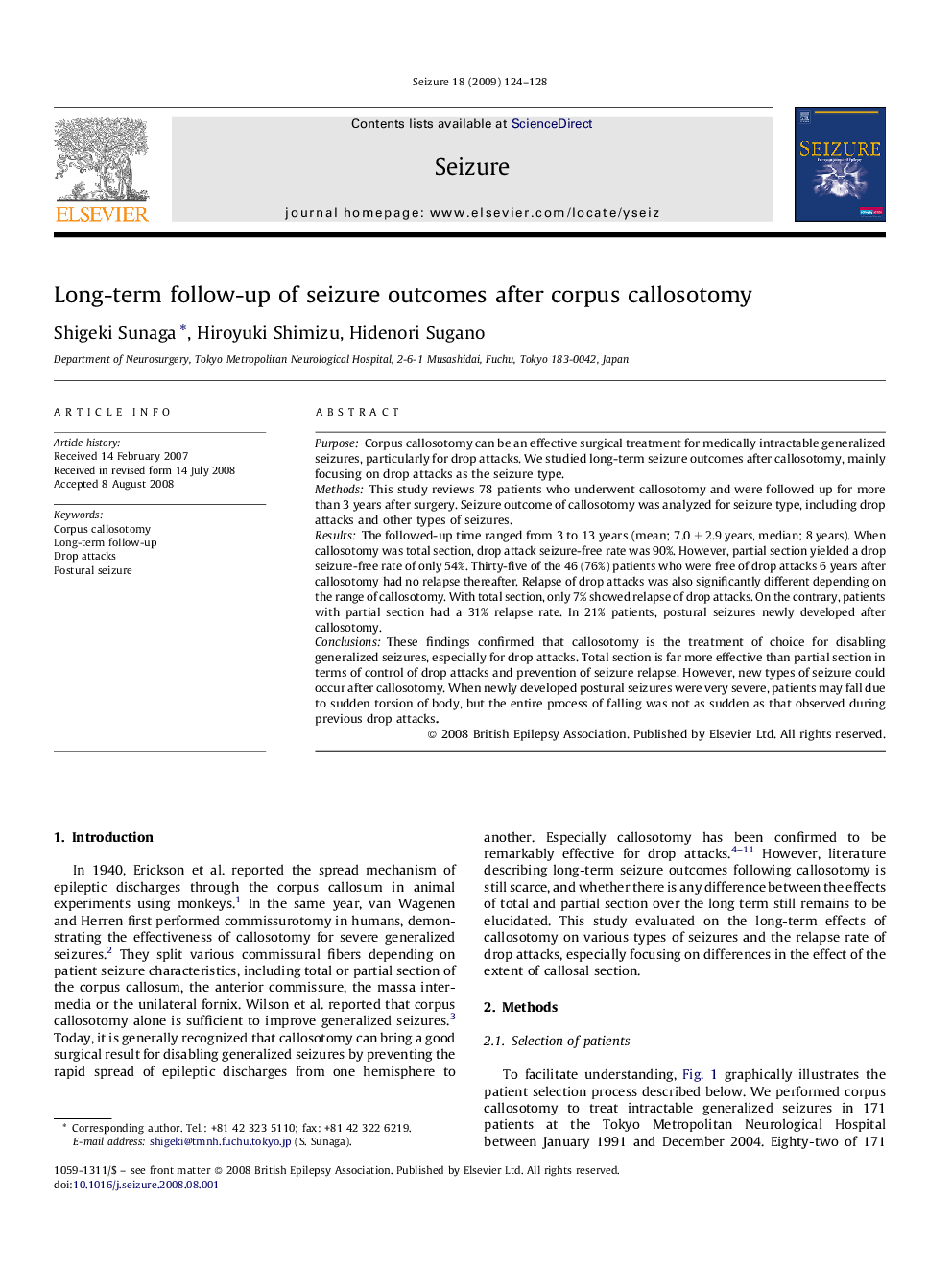| Article ID | Journal | Published Year | Pages | File Type |
|---|---|---|---|---|
| 341156 | Seizure | 2009 | 5 Pages |
PurposeCorpus callosotomy can be an effective surgical treatment for medically intractable generalized seizures, particularly for drop attacks. We studied long-term seizure outcomes after callosotomy, mainly focusing on drop attacks as the seizure type.MethodsThis study reviews 78 patients who underwent callosotomy and were followed up for more than 3 years after surgery. Seizure outcome of callosotomy was analyzed for seizure type, including drop attacks and other types of seizures.ResultsThe followed-up time ranged from 3 to 13 years (mean; 7.0 ± 2.9 years, median; 8 years). When callosotomy was total section, drop attack seizure-free rate was 90%. However, partial section yielded a drop seizure-free rate of only 54%. Thirty-five of the 46 (76%) patients who were free of drop attacks 6 years after callosotomy had no relapse thereafter. Relapse of drop attacks was also significantly different depending on the range of callosotomy. With total section, only 7% showed relapse of drop attacks. On the contrary, patients with partial section had a 31% relapse rate. In 21% patients, postural seizures newly developed after callosotomy.ConclusionsThese findings confirmed that callosotomy is the treatment of choice for disabling generalized seizures, especially for drop attacks. Total section is far more effective than partial section in terms of control of drop attacks and prevention of seizure relapse. However, new types of seizure could occur after callosotomy. When newly developed postural seizures were very severe, patients may fall due to sudden torsion of body, but the entire process of falling was not as sudden as that observed during previous drop attacks.
